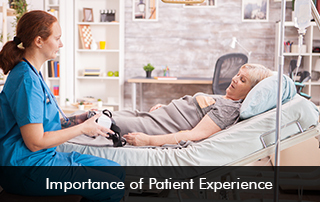To enhance the patient experience, it is crucial to offer the best clinical care and requires the provider to understand where the patient is coming from and ensure that they are comfortable. When patient experiences improve it benefits both the provider and the patient in the form of better clinical and business outcomes.
Using technology to improve patient experience
The healthcare sector is becoming competitive as patients take control of their healthcare journey through technology solutions such as the Patient Portal EMR Software and using virtual waiting rooms. Healthcare organizations need to ensure to deliver high-value care that focuses on patient experience which is possible by utilizing digital solutions. At the end of the day, the patient desires convenience whether it’s seamless payment through online bill payment options or easy scheduling through online appointment scheduling.
Digital solutions can help empower patients as they can respond to different options given to them. This includes their easy access to personal health information and digital access to educational and medical services that facilitate them to participate in their care process.
Digitization has transformed healthcare, and software solutions such as electronic health records, self-monitoring tools such as remote patient monitoring, and AI-enabled analytics will help manage patients and enhance the overall patient experience.
Patient satisfaction and patient experience
When patients are satisfied with the healthcare service they receive it will have a positive impact on patient experience. A Washington Health Alliance study, Your Voice Matters revealed the top 5 drivers of patient satisfaction were patient perceptions of the following,
- The clinician cared about the patient as a person.
- The provider intently listened to the patient.
- The healthcare provider knows crucial information about the patient’s medical history.
- The clinician was able to explain things that were easy to comprehend.
- The provider was able to answer all the questions that were asked.
Another study found that other main determinants of patient satisfaction were physical comfort, emotional support, and importance being given to patient preferences. The studies emphasize the softer side of the patient experience.
Optimizing the diagnostic experience
Healthcare organizations can see diagnostic procedures as an opportunity to improve the patient experience. When the patient is inside the hospital they highly value timely procedures and keep patient frustrations at bay. Reducing wait times for diagnostic results is the beginning to improve the experience. Patient-friendly technology should be used such as quieter scanners and staff should be very helpful to patients. For example, if a patient needs help using a patient kiosk staff members should be there to offer quick assistance.
Improving patient experience depends on using the right digital solution and also personalized attention from staff members and the provider during the clinical encounter. When patients are satisfied with a medical practice it will help to retain them and even encourage new patients to visit the clinic because of the seamless patient services offered which has a positive impact on patient experience.







